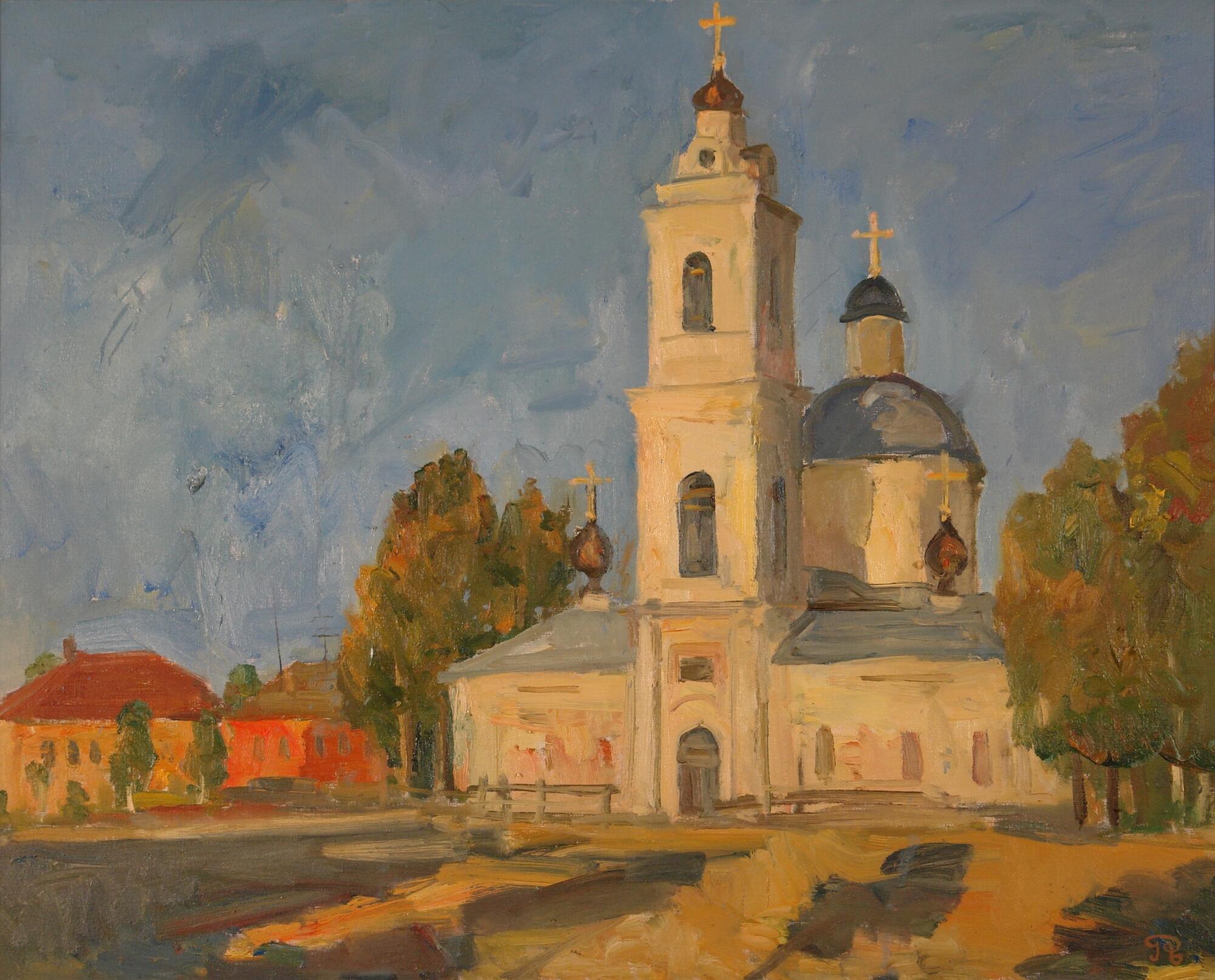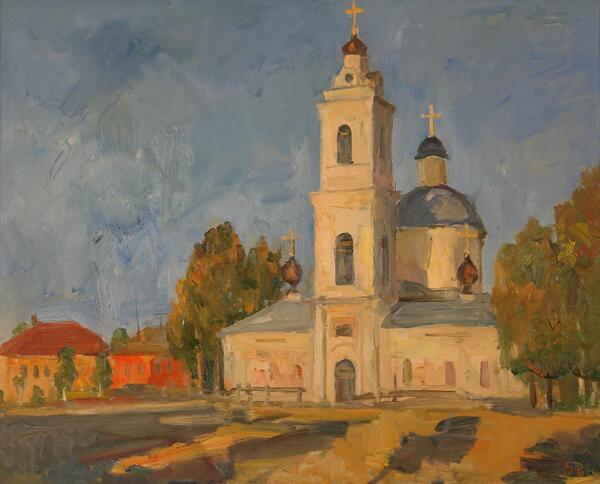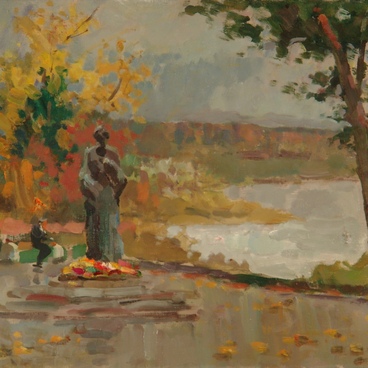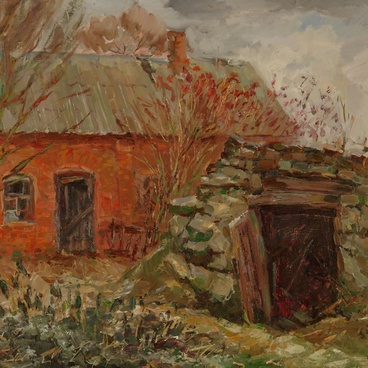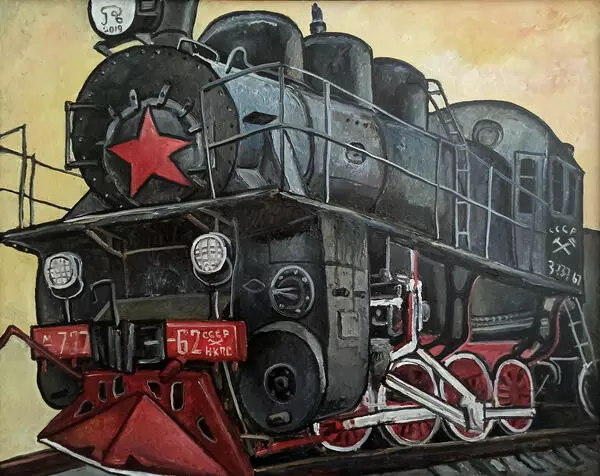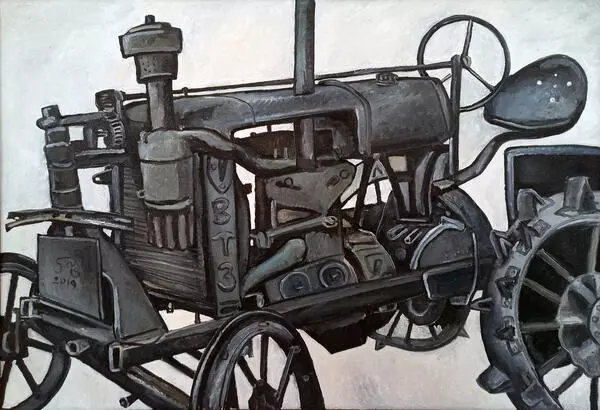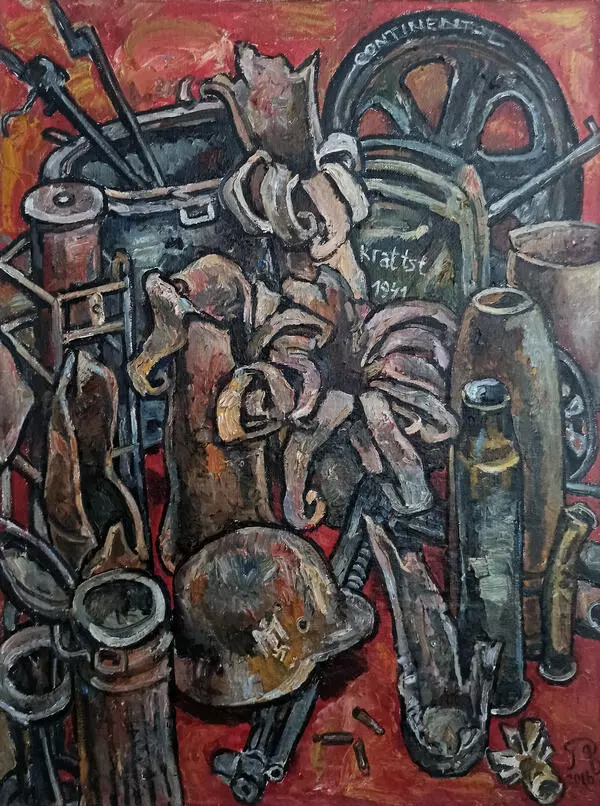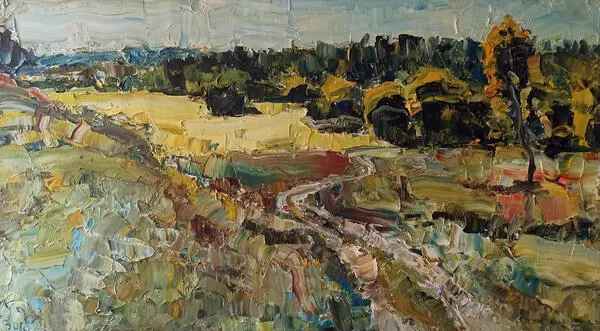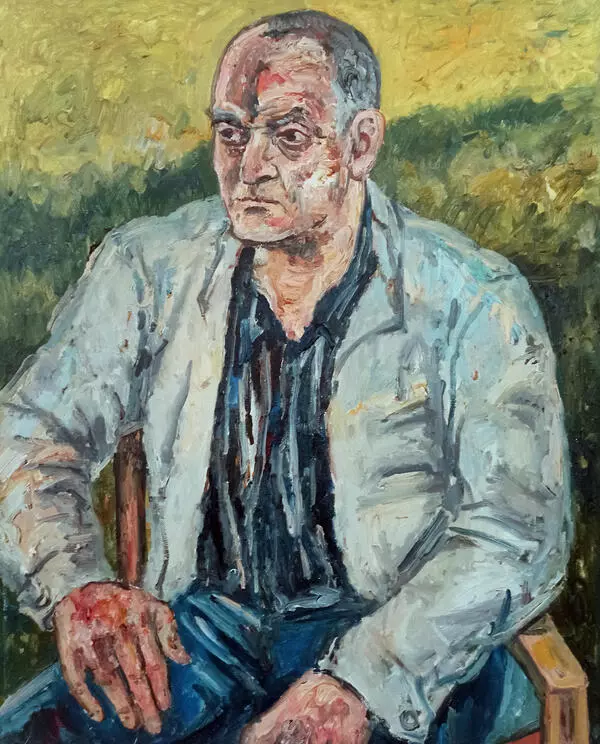Artist Fyodor Pomelov (b. 1974) was born in the city of Protvino in the family of the realistic artist Valentin Pomelov. He graduated from the painting department of the Moscow State Academic Art College (Homage to 1905), and later studied at the painting faculty in the workshop of Tatyana Nazarenko at the Surikov Moscow State Art Institute. Since 2010 he is a member of the Union of Artists of Russia. He held numerous solo exhibitions in Russia and abroad, and participated in numerous group exhibitions.
The artist himself believes that painting should be alive. Most of his landscapes are painted in the open air and in one go. He works in different genres, creates portraits and even still lifes depicting antique mechanisms. A special type of his work is connected with the images of small towns in Europe as well as the architecture of old Russian cities and their surroundings.
The painting “The Evening. St. Peter and St. Paul”s Cathedral” (2007) from the collection of the Tarusa Art Gallery depicts an 18th century cathedral that is considered one of the iconic sights of the town. The stone cathedral was commissioned by Empress Catherine II and built by the architect Ivan Yasnygin. Initially, the cathedral was a main building of an oblong shape, which was adjoined by an elegant three-tiered bell tower. Later, two side-chapels were added, and it took the form of a truncated cross.
Like many other cathedrals in the country, it was closed in 1934, and reopened its doors to visitors in 1998. Its restoration in the early 2000s was carried out by the Moscow architect Alexander Lyubeshkin.
The cathedral is captured on a warm day; the sunlight floods the nearest buildings and the road to the cathedral. The artist very faithfully reproduces the architectural details of the building, reflecting its majesty and somewhat poeticizes its image, depicting a white-stone building in a softer color scheme. In general, the composition is dominated by a clear, warm color, reflecting the onset of autumn. In his landscape, the artist manages to reflect the attractive atmosphere of the city and convey the spirit of its identity.
The artist himself believes that painting should be alive. Most of his landscapes are painted in the open air and in one go. He works in different genres, creates portraits and even still lifes depicting antique mechanisms. A special type of his work is connected with the images of small towns in Europe as well as the architecture of old Russian cities and their surroundings.
The painting “The Evening. St. Peter and St. Paul”s Cathedral” (2007) from the collection of the Tarusa Art Gallery depicts an 18th century cathedral that is considered one of the iconic sights of the town. The stone cathedral was commissioned by Empress Catherine II and built by the architect Ivan Yasnygin. Initially, the cathedral was a main building of an oblong shape, which was adjoined by an elegant three-tiered bell tower. Later, two side-chapels were added, and it took the form of a truncated cross.
Like many other cathedrals in the country, it was closed in 1934, and reopened its doors to visitors in 1998. Its restoration in the early 2000s was carried out by the Moscow architect Alexander Lyubeshkin.
The cathedral is captured on a warm day; the sunlight floods the nearest buildings and the road to the cathedral. The artist very faithfully reproduces the architectural details of the building, reflecting its majesty and somewhat poeticizes its image, depicting a white-stone building in a softer color scheme. In general, the composition is dominated by a clear, warm color, reflecting the onset of autumn. In his landscape, the artist manages to reflect the attractive atmosphere of the city and convey the spirit of its identity.
